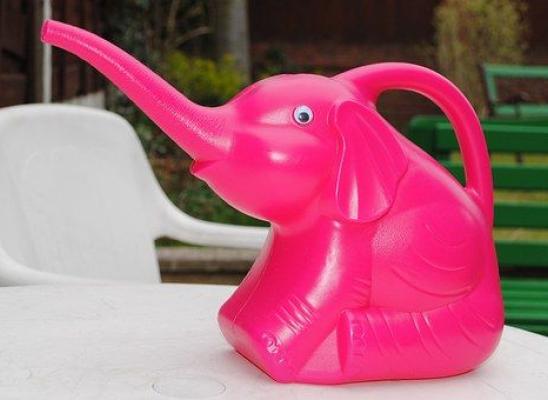Fiddles and Fidgets

Online test
Find out the severity of your symptoms with this free online test
 It may seem strange walking around with a bagful of unusual toys if you are a teenager or an adult with no children of your own. But if you are a sufferer of Trichotillomania, a hair pulling disorder common in a large number of people around the world, your bagful of toys might be your salvation. Trichotillomania is the repetitive pulling of hair from any part of the body, most especially the scalp. This disease often goes unnoticed because those inflicted by it are often able to hide the symptoms, covering up their baldness or scabs with hats, scarves or longer length clothing. Sufferers continuously pull the hair from their head or body in an effort to relieve tension and anxiety when confronted with a stressful situation. Pleasure or gratification is felt once the hair has been pulled but this is short-lived as the individual usually experiences significant distress when he or she notices the resultant bald patches or scabs that occur when pulling. And so the sufferer becomes trapped in this cycle of anxiety.
It may seem strange walking around with a bagful of unusual toys if you are a teenager or an adult with no children of your own. But if you are a sufferer of Trichotillomania, a hair pulling disorder common in a large number of people around the world, your bagful of toys might be your salvation. Trichotillomania is the repetitive pulling of hair from any part of the body, most especially the scalp. This disease often goes unnoticed because those inflicted by it are often able to hide the symptoms, covering up their baldness or scabs with hats, scarves or longer length clothing. Sufferers continuously pull the hair from their head or body in an effort to relieve tension and anxiety when confronted with a stressful situation. Pleasure or gratification is felt once the hair has been pulled but this is short-lived as the individual usually experiences significant distress when he or she notices the resultant bald patches or scabs that occur when pulling. And so the sufferer becomes trapped in this cycle of anxiety.
HRT and Competing Responses
Although there is no proven cure for this disorder, Habit Reversal Training (HRT) is a form of therapy that uses techniques shown to be effective in breaking this cycle and putting the patient on the road to recovery. It teaches the patient to become more aware of circumstances during which pulling occurs, and provides opportunities to discourage repetitive behaviour. Competing Response Training is a subset of HRT where the patient is shown how to substitute another response for the urge to pull that is incompatible with the undesired behaviour. It encourages the use of sensory substitutes not only to provide relief for the itching sensation that the patient feels, but also discourages the fingers from making contact with the scalp or other areas on the body where pulling occurs. This form of therapy addresses the nervous system’s need for sensory input whilst at the same time removing the patient’s urge to pull.
Fiddles and Fidgets to Compete with Pulling
 A variety of fiddle and fidget toys can be employed in this form of therapy. Many of them are available online and some can even be purchased at baby stores, jewellery stores or hardware shops. Patients suffering from Trichotillomania should use toys that they like and that they feel comfortable with. Most of these toys should be items that one can do tricks with and that keep the hands busy and away from the site where pulling occurs. If you are suffering from this disorder you may be wondering what type of toys will be the one for you to start with. Playdough, silly putty or clay are the most popular fidget toys. They keep the hands busy as they can be moulded continuously and they are also easy to carry around as they come in small containers that can easily be slipped into your pocket or handbag. For people who do not like the feel of putty, there are a number of other fidgets and fiddles that can be substituted as a competing response mechanism. Tube-like flexible bracelets called ‘tangle juniors’ are available in a variety of sizes that can be worn on your wrist or carried around. They come in different textures like smooth, shiny, bumpy and even fuzzy like suede or velvet. These fidget toys are favoured by children, and adults seeking something similar can use a charm bracelet or snake bracelet which is a type of a soft metal rope that coils and twists easily. Flexiblox fiddlers are tiny plastic blocks held together by an elasticated string, it can bend in different directions making it ideal to use when the urge to pull strikes. Sensory stix also known as Krush-N-Flex are small plastic rods with soft bristles. Hair pullers love this toy as it provides relief and eases tension as they run their fingers across the bristles. Similar to these are fidget pencil tops as they also have the soft bristles but can be attached to the top of your pen or pencil. Another toy is the Isoflex stress ball which provides a sensation of squeezing which is what some sufferers feel relieves the addiction to pulling. All of these toys can be ordered online from USA or UK based stores like thetwiddler.com, tanglecreations, and the Trichotillomania Learning Centre's online store. Other substitute items that achieve the desired sensation can easily be found at baby stores, pet shops or even in your own home. Kinetic sand is a type of sand mixed with silicone that can be very relaxing to squeeze, squash or even just run your fingers through. Light up neon massage balls which are sold on street corners are a cheap but effective tool to discourage Trichotillomania, as are prayer beads and screws, nuts and bolts. Head massagers or head scratchers provide a pleasant light scratching sensation over the scalp and are a good substitute to discourage the fingers from returning to the scalp.
A variety of fiddle and fidget toys can be employed in this form of therapy. Many of them are available online and some can even be purchased at baby stores, jewellery stores or hardware shops. Patients suffering from Trichotillomania should use toys that they like and that they feel comfortable with. Most of these toys should be items that one can do tricks with and that keep the hands busy and away from the site where pulling occurs. If you are suffering from this disorder you may be wondering what type of toys will be the one for you to start with. Playdough, silly putty or clay are the most popular fidget toys. They keep the hands busy as they can be moulded continuously and they are also easy to carry around as they come in small containers that can easily be slipped into your pocket or handbag. For people who do not like the feel of putty, there are a number of other fidgets and fiddles that can be substituted as a competing response mechanism. Tube-like flexible bracelets called ‘tangle juniors’ are available in a variety of sizes that can be worn on your wrist or carried around. They come in different textures like smooth, shiny, bumpy and even fuzzy like suede or velvet. These fidget toys are favoured by children, and adults seeking something similar can use a charm bracelet or snake bracelet which is a type of a soft metal rope that coils and twists easily. Flexiblox fiddlers are tiny plastic blocks held together by an elasticated string, it can bend in different directions making it ideal to use when the urge to pull strikes. Sensory stix also known as Krush-N-Flex are small plastic rods with soft bristles. Hair pullers love this toy as it provides relief and eases tension as they run their fingers across the bristles. Similar to these are fidget pencil tops as they also have the soft bristles but can be attached to the top of your pen or pencil. Another toy is the Isoflex stress ball which provides a sensation of squeezing which is what some sufferers feel relieves the addiction to pulling. All of these toys can be ordered online from USA or UK based stores like thetwiddler.com, tanglecreations, and the Trichotillomania Learning Centre's online store. Other substitute items that achieve the desired sensation can easily be found at baby stores, pet shops or even in your own home. Kinetic sand is a type of sand mixed with silicone that can be very relaxing to squeeze, squash or even just run your fingers through. Light up neon massage balls which are sold on street corners are a cheap but effective tool to discourage Trichotillomania, as are prayer beads and screws, nuts and bolts. Head massagers or head scratchers provide a pleasant light scratching sensation over the scalp and are a good substitute to discourage the fingers from returning to the scalp.
Find the one that's right for you
While these are just a few of the fidgets and fiddles available, it must be borne in mind that sufferers of hair pulling disorder may have to try a number of them first before settling on the one that provides them with the right stimulating sensation. In addition to that the toy will be easier to use if it is readily available like a bracelet or chain that can be worn at all times. Fortunately they are all mostly inexpensive and most people suffering from Trichotillomania have reported a decrease in the urge to pull after employing these toys as an alternative sensory seeking response.
Online test
Find out the severity of your symptoms with this free online test
Start your journey with TrichStop
Take control of your life and find freedom from hair pulling through professional therapy and evidence-based behavioral techniques.
Start Now



